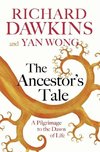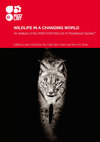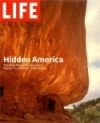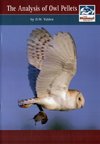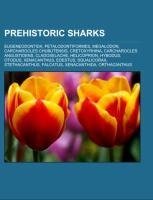
-
 Anglický jazyk
Anglický jazyk
Prehistoric sharks
Source: Wikipedia. Pages: 24. Chapters: Eugeneodontida, Petalodontiformes, Megalodon, Carcharocles chubutensis, Cretoxyrhina, Carcharocles angustidens, Cladoselache, Helicoprion, Hybodus, Otodus, Xenacanthus, Edestus, Squalicorax, Stethacanthus, Falcatus,... Viac o knihe
Na objednávku, dodanie 2-4 týždne
12.41 €
bežná cena: 14.10 €
O knihe
Source: Wikipedia. Pages: 24. Chapters: Eugeneodontida, Petalodontiformes, Megalodon, Carcharocles chubutensis, Cretoxyrhina, Carcharocles angustidens, Cladoselache, Helicoprion, Hybodus, Otodus, Xenacanthus, Edestus, Squalicorax, Stethacanthus, Falcatus, Xenacanthida, Orthacanthus, Listracanthus, Scapanorhynchus, Symmoriida, Glikmanius, Edestidae, Janassa, Belantsea, Cobelodus, Anomotodon, Siksika ottae, Sphenacanthus, Agassizodontidae, Tristychius, Akmonistion, Cladoselachidae, Hybodontidae, Physogaleus, Erquitaia, Hemipristis curvatus, Cardabiodon, Xenacanthidae, Stethacanthidae, Triodus, Acrodus, Hemipristis serra, Negaprion eurybathrodon, Chaenogaleus affinis, Symmoriidae, Wodnika, Caseodus, Fadenia, Parahelicoprion, Symmorium. Excerpt: The megalodon (pronounced -¿-l¿-don; meaning "big tooth", from Greek µ¿¿a¿ (mega, "big") and ¿d¿¿¿ (odon, "tooth")) is an extinct species of shark that lived roughly from 28 to 1.5 million years ago, during the Cenozoic Era (late Oligocene to early Pleistocene). The taxonomic assignment of C. megalodon has been debated for nearly a century, and is still under dispute with two major interpretations; Carcharodon megalodon (under family Lamnidae) or Carcharocles megalodon (under family Otodontidae). Consequently, the scientific name of this species has been commonly abbreviated to C. megalodon in literature. C. megalodon is regarded as one of the largest and most powerful predators in vertebrate history. C. megalodon likely had a profound impact on structuring of the marine communities. Fossil remains indicate that this giant shark reached a total length (TL) of more than 16 metres (52 ft), and also affirm that it had a cosmopolitan distribution. Scientists suggest that C. megalodon looked like a stockier version of the great white shark, Carcharodon carcharias, in life. The depiction of a shark's head by Nicolaus Steno in his work, The Head of a Shark Dissected.According to Renaissance accounts, gigantic, triangular fossil teeth often found embedded in rocky formations were once believed to be petrified tongues, or glossopetrae, of the dragons and snakes. This interpretation was corrected in 1667 by a Danish naturalist, Nicolaus Steno, who recognized them as ancient shark teeth (and famously produced a depiction of a shark's head bearing such teeth). He mentioned his findings in a book, The Head of a Shark Dissected, which also contained an illustration of a C. megalodon tooth, previously considered to be a tongue stone. A Swiss naturalist, Louis Agassiz, gave this shark its scientific name, Carcharodon megalodon, in 1835, in his research work Recherches sur les poissons fossiles (Research on fossil fish), which he completed in 1843. The teeth of the C. megalodon are
- Vydavateľstvo: Books LLC, Reference Series
- Rok vydania: 2011
- Formát: Paperback
- Rozmer: 246 x 189 mm
- Jazyk: Anglický jazyk
- ISBN: 9781157265337
